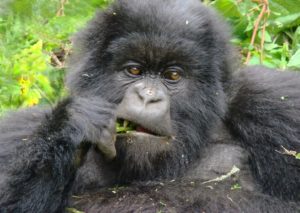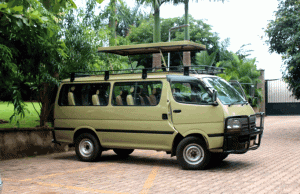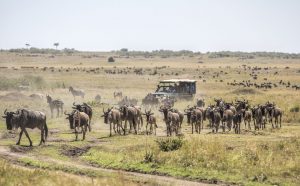Top 4 activities in Serengeti National Park
The Serengeti National Park is a national park in Tanzania established in 1951 on an area of about 5,700 square miles (14,763 sq km) and derived its name from the Maasai phrase “siringet” which translates to “endless plains”. This famous park is located in northern Tanzania on vast, of grassland plains, savanna, riverine forest, and woodlands. The park lies in northwestern Tanzania, bordered to the north by the Kenyan border adjoining the Maasai Mara National Reserve and from the southeast of the park there is Ngorongoro Conservation Area while in the southwest lies Maswa Game Reserve, to the west are the Ikorongo and Grumeti Game Reserves and Loliondo Game Control Area in the East and combined together they create the larger Serengeti ecosystem. The great Serengeti area is roughly defined by the famous wildebeest migration route and at least 500 bird species like the guinea fowls, kori bustards, Masai ostrich, secretary bird, southern ground hornbill, crowned cranes, marabou storks, yellow-billed stork, lesser flamingo, martial eagles, lovebirds, oxpeckers and vultures have been recorded here.
To best explore the vast Serengeti plains, it’s best you get knowledge about the regions which we have explained below.
- Serengeti Plains
This area almost has no trees but dominated by grassland and has beautiful scenery of the park, it is a wildebeest breeding ground and they stay here from December to May amongst other hoofed wildlife like the hartebeest, impala, zebra, buffalo, gazelle, topi and waterbuck.
- Northern Serengeti
The Northern Serengeti has its landscape dominated by open woodlands and hills ranging from Seronera in the south to the Mara River and other than the migratory wildebeest and zebra (July to August, and November), elephant, giraffe, and dik dik are the commonest wildlife species here.
- Western Corridor
The western corridor area contains the black clay soil covered by the savannah grassland within it the Grumeti River and its gallery forests are found harboring Nile crocodiles, Patas monkeys, hippos and martial eagles has the great migration route for May to July.
There are plenty of activities to enjoy on guided safari in Serengeti park but the ones below make the top list. Check them out and contact us now to book or inquire about how to book an activity
Activities in Serengeti National Park
- Game Drives
Serengeti is the wildlife paradise and famous for its migrating wildebeest, its dense lion population, cheetah, a leopard, hyena, jackals, hartebeest, impala, zebra, buffalo, gazelle, topi and waterbuck among others. So to fully explore it, morning, evening or night game drives are organized for visitors to penetrate deep into the Serengeti wilderness.
- Cultural visit to the Maasai Village
There are several Maasai villages or Maasai bomas accepting visitors to visit and learn about their customs, culture, traditions, and lifestyle at a fee. The tour guides will definitely translate and introduce you to them where you will join a dancing ceremony, explore the traditional bomas made out of sticks, mud, and cow dung not forgetting to purchase the artifacts like bracelets and beads etc that they locally craft.
· Experience the Great Migration
Witness the Great Migration of over a million herds of wildebeest and other hundreds of other hoofed animals, including zebras, eland, and gazelle crossing through the Mara River in a line and some being savaged by crocodiles.
From January-March the wildebeest concentration is in the northern Ngorongoro Conservation Area and southern Serengeti area grazing and calving.
April and May they start to migrate in northwestern direction in search of green grass and May is generally the beginning of the mating season or “the rut” for the animals.
In June they start to concentrate on the western side of the crocodile-dominated Grumeti River.
Then in July and August they start their move northeast to the Mara River and the Kenyan border.
Lastly, in September-December they graze in the Maasai Mara National Reserve in Kenya and then they start to move back into Tanzania slowly through the southwestern direction to begin the process once more.
- Bird Watching
Serengeti fully supports birdlife and it is boasting with at least 500 bird species including guinea fowls, kori bustards, Masai ostrich, secretary bird, southern ground hornbill, crowned cranes, marabou storks, yellow-billed stork, lesser flamingo, martial eagles, lovebirds, ox peckers and many species like the vultures attracting several birders who enjoy birding are photography.
The most ultimate way to view this magnificent wilderness is to fly in a hot air balloon over the plains as you watch the sunrise over the endless plains before the wildlife game disappear in the shrubs in search for shelter.





